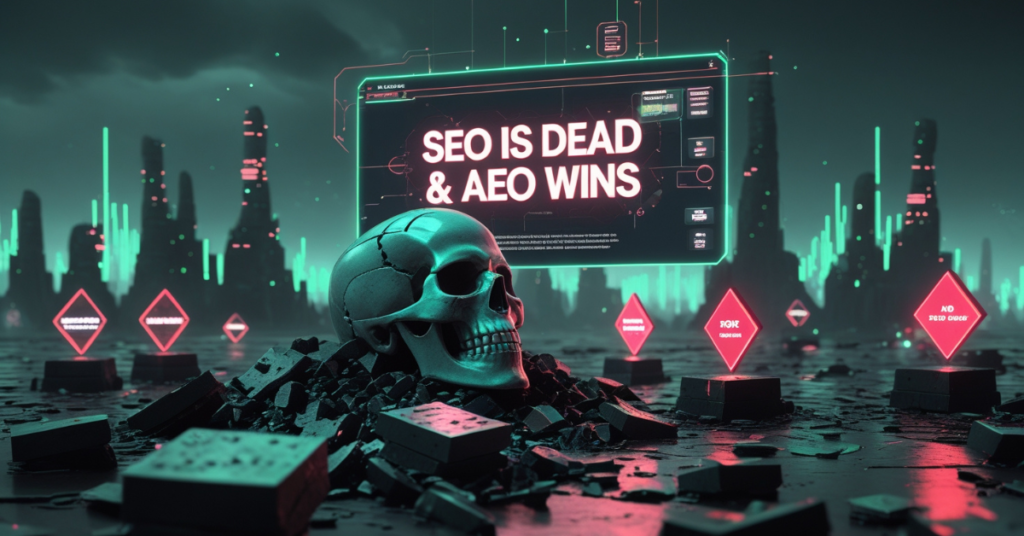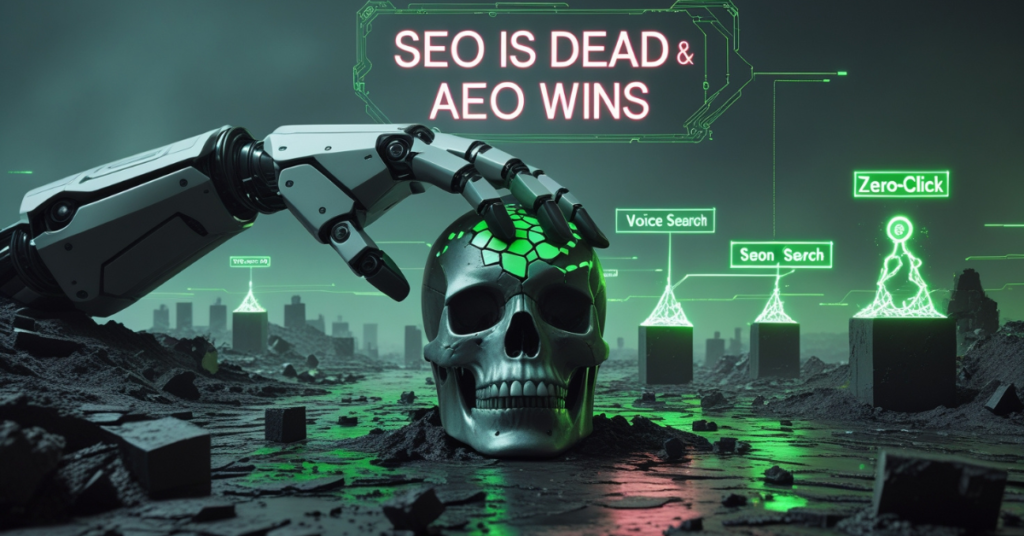How to Structure Content for AI Search in 2025: A Practical Guide
AI Search in 2025 refers to search engines powered by artificial intelligence that deliver results using natural language processing, machine learning, and generative models. To rank in these environments, content must be conversational, structured, and optimized for intent-based queries.
 Table of Contents
Table of Contents
-
What Is E-E-A-T and Why It Matters
-
Technical SEO’s Role in AI Search
-
Structuring AI-Ready Content
-
Ethical Content and Trust Signals
-
Ask Engine Optimization (AEO) for Visibility
-
How AI Handles Duplicate Content
-
Mistakes to Avoid in AI SEO
Quick Self-Audit Checklist
Final Thoughts & Next Steps
1.  What Is E-E-A-T and Why Is It Crucial for AI Search?
What Is E-E-A-T and Why Is It Crucial for AI Search?
E-E-A-T stands for Experience, Expertise, Authoritativeness, and Trustworthiness. In 2025, AI search engines—especially Google’s Search Generative Experience (SGE)—prioritize this framework when ranking and surfacing content.

AI doesn’t just read content; it evaluates credibility.
 Real Examples:
Real Examples:
-
A health blog featuring verified authors with medical degrees stands out in AI summaries.
-
A finance site that clearly discloses author credentials earns more trust in generative answers.
-
A travel guide with original images, reviews, and personal narratives proves experience and authority.
2.  How Technical SEO Impacts Visibility in AI Search
How Technical SEO Impacts Visibility in AI Search
While AI search emphasizes content quality, technical SEO still plays a foundational role.
Key factors:
-
Fast-loading, mobile-first design
-
Clear navigation and crawlable architecture
-
Structured data like schema markup
 Real-World Scenarios:
Real-World Scenarios:
-
A recipe site using
Recipe Schemagets pulled into featured snippets. -
A news portal structuring headlines and dates ensures accurate AI indexing.
-
An e-commerce store improves discoverability with
Product,Review, andBreadcrumbschema.
Pro tip: Technical SEO makes your content machine-readable, which is essential for AI-based summarization.
3.  How to Make Your Content AI-Ready in 2025
How to Make Your Content AI-Ready in 2025
Structuring for AI means designing content that answers, not just ranks.
Practical tips:
-
Use short paragraphs and clear subheadings
-
Frame sections around user questions
-
Incorporate FAQs and direct answers
 Use Cases:
Use Cases:
-
A tech blog includes a “What is X?” block for each article.
-
A lifestyle blog adds conversational Q&A near the end of posts.
-
A review site builds structured comparison tables for easy summarization.
Remember: AI bots love clean formatting and clarity.
4.  Why Ethical AI-Focused Content Matters More Than Ever
Why Ethical AI-Focused Content Matters More Than Ever
Transparency is a ranking signal.
In 2025, AI search engines are trained to identify bias, misinformation, or hidden agendas. Ethically sound content ranks better and gains trust.
 Best Practices:
Best Practices:
-
Disclose sponsorships and affiliate links
-
Cite reputable sources for medical, legal, or financial claims
-
Present balanced views to avoid AI flagging your content as one-sided
Whether you run a blog or a business website, integrity is optimization.
5.  Ask Engine Optimization (AEO) = Visibility in AI Search
Ask Engine Optimization (AEO) = Visibility in AI Search
AEO is the practice of optimizing content for question-based AI searches—the ones users ask via voice, chat, or smart assistants.
Why it’s powerful:
-
Gets your content in People Also Ask sections
-
Boosts chances of being included in AI-generated summaries
-
Helps you own niche queries with clear answers
 Examples:
Examples:
-
A pet care site includes “Is chocolate bad for dogs?” in FAQ format
-
A SaaS product page answers “How does your tool compare to competitors?”
-
A DIY blog structures entire posts as step-by-step how-to guides
TL;DR: If you’re not writing for the question, you’re not ranking in the answer.
6.  How AI Search Engines Detect Duplicate or Low-Quality Content
How AI Search Engines Detect Duplicate or Low-Quality Content
AI search in 2025 is relentless against repetition and fluff.
It identifies:
-
Spun or copycat content
-
Generic product descriptions
-
Articles lacking depth or original insight
 What Stands Out Instead:
What Stands Out Instead:
-
Original case studies and customer quotes
-
Unique analogies and perspectives
-
Fresh takes with updated statistics or expert commentary
Rule of thumb: Write something new, or you won’t show up.
7.  Common Mistakes That Hurt AI SEO Performance
Common Mistakes That Hurt AI SEO Performance
Avoiding these pitfalls can mean the difference between top visibility and zero impressions:
-
Keyword stuffing with no context
-
Ignoring structured data
-
Failing mobile UX or site performance audits
 Situational Examples:
Situational Examples:
-
A fashion blog without responsive design gets outranked on mobile AI results.
-
A news website without author schema fails to get cited in AI-generated headlines.
-
A fitness blog overuses “weight loss” without meaningful content, hurting rankings.
 Self-Audit Checklist: Is Your Content AI-Optimized?
Self-Audit Checklist: Is Your Content AI-Optimized?
| Checklist Item | Ready?  |
|---|---|
 E-E-A-T signals (bios, credentials, trust) E-E-A-T signals (bios, credentials, trust) |
|
 Technical SEO (speed, mobile, schema) Technical SEO (speed, mobile, schema) |
|
 Conversational & structured content Conversational & structured content |
|
 Transparent, ethical, balanced writing Transparent, ethical, balanced writing |
|
 Q&A or FAQ sections for AEO Q&A or FAQ sections for AEO |
|
 Unique, high-quality content Unique, high-quality content |
|
 Avoided keyword stuffing and repetition Avoided keyword stuffing and repetition |
 Final Thoughts: SEO Has Changed—Have You?
Final Thoughts: SEO Has Changed—Have You?
AI Search in 2025 has reshaped everything we know about discoverability. Search is no longer just about links—it’s about answers, experiences, and trust.
The faster you adapt, the faster you grow.
 Next Step:
Next Step:

1. What is E-E-A-T, and why is it vital for AI search?
E-E-A-T stands for Experience, Expertise, Authoritativeness, and Trustworthiness. Google’s 2025 SGE (Search Generative Experience) guidelines emphasize E-E-A-T as crucial for ranking content. AI-driven search engines prioritize content created by experts who demonstrate genuine experience and authority.
For example:
-
A travel blog should showcase personal experiences with original photos and reviews to highlight real-world experience.
-
A medical advice website must ensure content comes from certified professionals, citing credentials clearly.
-
Financial blogs benefit from expert authors who transparently share credentials and proven experience.
Including clear author bios, detailed expertise backgrounds, and verified sources boosts your E-E-A-T signals for AI search.
2. How does technical SEO impact AI-driven search results?
Technical SEO remains critical, as AI search engines rely heavily on structured data and clear site architecture to understand your content better.
Examples include:
-
A food recipe site using schema markup to highlight recipe details clearly in search snippets.
-
An e-commerce store ensuring site speed and mobile optimization to avoid AI-based ranking penalties.
-
A news website implementing structured data for headlines, authors, and publishing dates to enhance visibility in AI-generated snippets.
Good technical SEO helps AI algorithms index and present your content accurately, improving your search visibility.
3. How do you ensure your content is AI-ready?
AI readiness involves optimizing content structure and relevance, aligning with how AI evaluates and ranks content.
Here’s how:
-
Educational blogs should structure content in clear, short paragraphs with subheadings addressing specific questions.
-
Tech review websites need detailed FAQs that directly answer commonly searched user queries, making content ideal for ask engine optimization.
-
Lifestyle blogs should include natural language Q&A sections that AI can easily feature in search results.
Align your content clearly with audience search intent, using conversational language for optimal AI readiness.
4. Why is ethical AI-focused content important?
Ethical considerations in AI search are growing. Google’s 2025 SGE guidelines highlight the importance of ethically sound, transparent, and unbiased content.
For instance:
-
Health-focused websites must avoid misinformation by citing reputable studies and openly addressing potential biases.
-
Financial blogs should transparently disclose sponsorships and clearly mark affiliate links.
-
Social commentary platforms need balanced views and transparency in sourcing to avoid misleading AI users.
Ethically structured content helps build trust with both audiences and AI algorithms.
5. How can ask engine optimization (AEO) enhance visibility?
Ask engine optimization (AEO) optimizes your content specifically for question-based, conversational AI searches. It’s all about anticipating user questions and structuring clear, concise answers.
Examples:
-
Home improvement blogs create content answering questions like “How do I fix a leaky faucet?”
-
Pet care websites anticipate common queries such as “What foods are toxic to dogs?”
-
Marketing agencies optimize pages around common industry-specific questions like “How to measure social media ROI?”
AEO ensures your content aligns directly with user queries, boosting your visibility in AI-driven search results.
6. How do AI search engines handle duplicate or low-quality content?
AI-driven search engines, like Google’s SGE in 2025, have become adept at identifying duplicate or low-quality content, prioritizing unique, valuable information.
Examples include:
-
Travel review sites must offer unique perspectives rather than copying competitor reviews.
-
Affiliate marketing blogs should create detailed, personalized product experiences instead of generic descriptions.
-
Educational platforms need original explanations, avoiding copying textbook content verbatim.
Quality, originality, and depth now directly impact your ranking in AI search results.
7. What common mistakes should you avoid when structuring content for AI?
Several common mistakes could sabotage your visibility in AI search:
-
Overusing keywords without context
-
Ignoring schema markup and structured data
-
Neglecting mobile optimization and site speed
For example:
-
Fitness blogs shouldn’t stuff keywords like “weight loss tips” unnaturally.
-
News sites must implement structured data to avoid confusing AI-driven snippet selection.
-
Fashion blogs should never overlook mobile-first design, risking invisibility in mobile AI searches.
Avoiding these pitfalls ensures that your content performs strongly in AI search.
In-depth Quick Checklist for Self-Auditing Your Content:
-
E-E-A-T: Clearly display author credentials, provide genuine experiences, and ensure your sources and references are trustworthy.
-
Technical SEO: Verify that your site is mobile-friendly, loads quickly, and uses structured data and schema markup accurately.
-
AI-Readiness: Structure content clearly, using concise paragraphs, direct answers, and conversational language optimized for AEO.
-
Ethical Content: Maintain transparency about sponsorships, avoid misinformation, and present balanced viewpoints.
-
Ask Engine Optimization: Create detailed FAQs and directly answer audience queries with high-quality, relevant content.
-
Content Quality: Regularly check for and avoid duplicate, superficial, or poorly structured content.
-
Common Pitfalls: Regularly audit for keyword stuffing, lack of structured data, and slow or mobile-unfriendly designs.
By thoroughly following this checklist, you’ll position your content to thrive in the rapidly evolving landscape of AI search in 2025. To learn more about optimizing your site for AI-driven searches, explore our detailed resources on ask engine optimization.
Act now! AI search is reshaping the digital world—don’t let your website get left behind. Immediately perform your website’s AEO audit and secure your online visibility before it’s too late!



